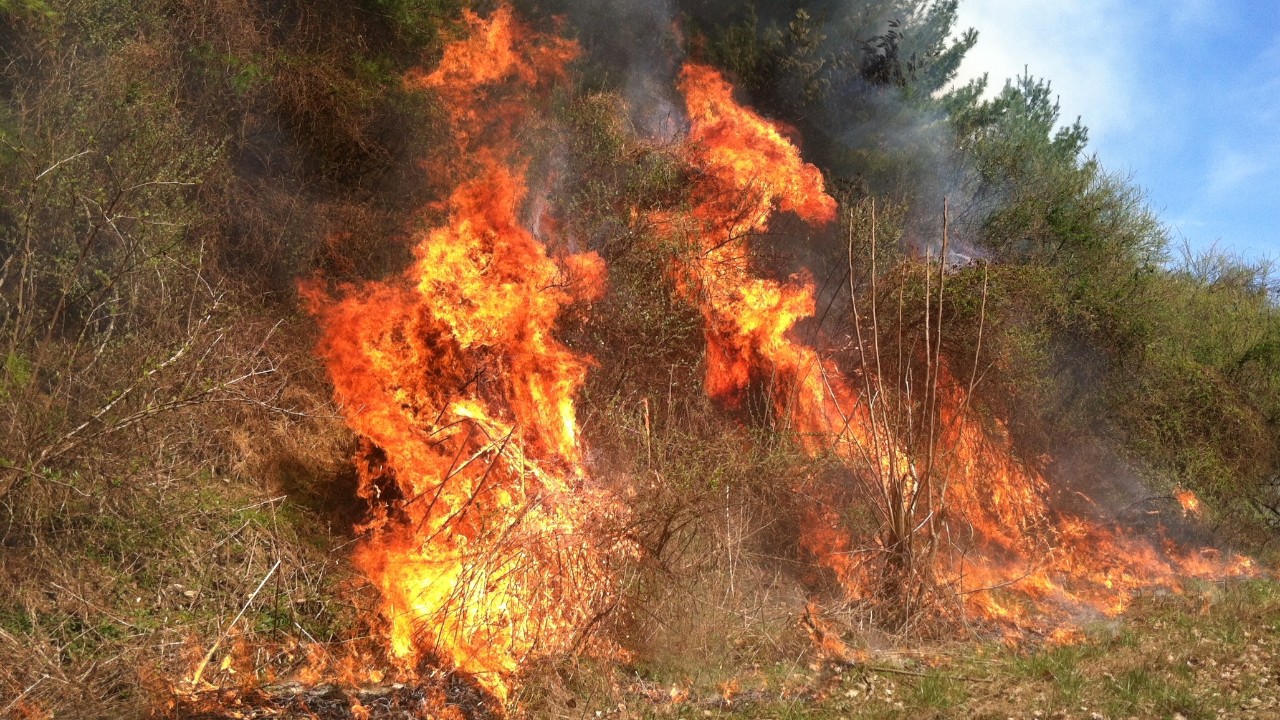Fire
While some tree species are adapted to survive low to moderate intensity fires, excessively high temperatures can damage even the most fire-adapted trees. Because of the proximity of the vascular system and cambium to the bark surface, these vital tissues can be easily damaged or killed if not protected by a thick layer of insulating bark or if fire temperatures become excessive. In addition, foliage, buds, and near- surface roots can be damaged or killed during fires, further stressing trees and making them susceptible to secondary stress agents.
Frequently, secondary insects such as ambrosia beetles will invade damaged tissues shortly after a fire event. If trees are severely stressed, opportunistic insects such as Ips engraver beetles or southern pine beetles may move in. Frequent, low intensity burns are less likely to injure or kill trees. Intense fires generated by heavy fuel loads, dry conditions, and strong winds are more likely to exceed the capacity of the bark to insulate.
Fire injury may show up immediately, but often the effects are not noticed until many years after the damage occurs.
